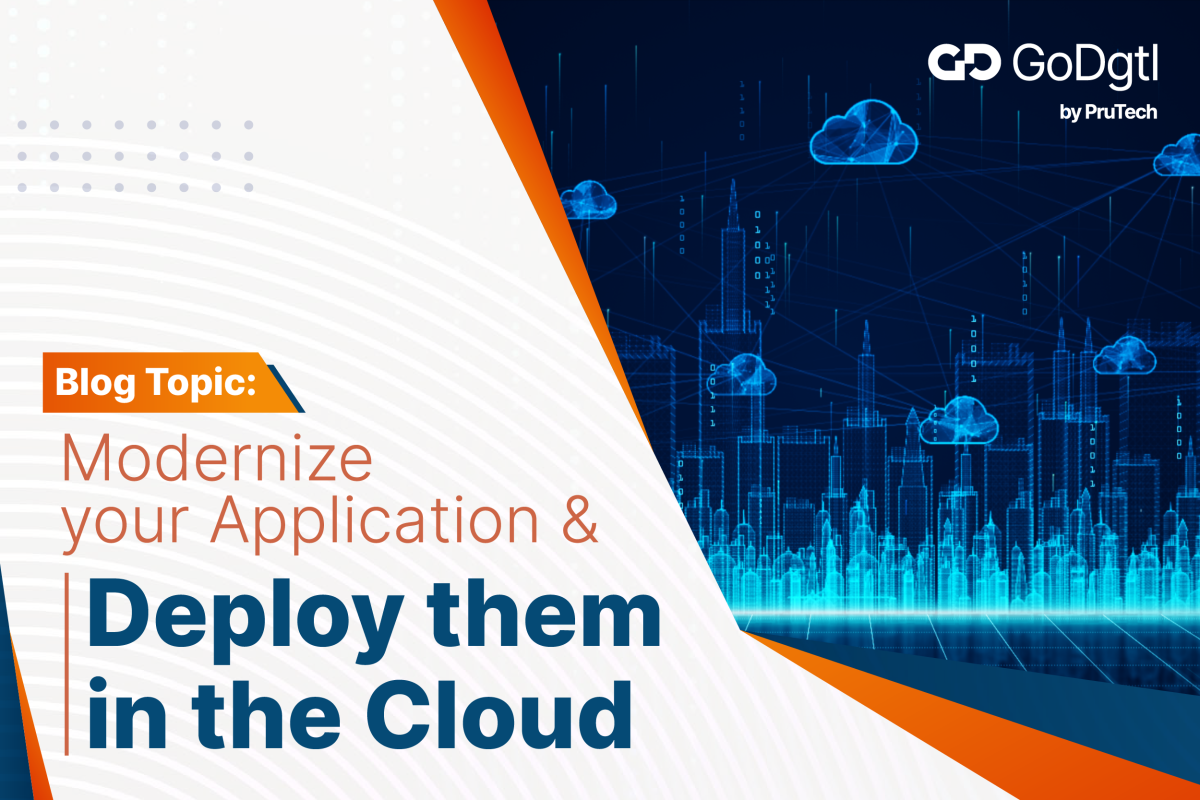In today’s fast-paced business landscape, it’s essential to keep up with changing demands and stay competitive. Modernizing your application and deploying it in the cloud can provide significant benefits to your business. Let’s take a closer look at the key advantages of modernizing your application and deploying it in the cloud.
- Scalability: Cloud platforms offer a vast array of computing resources that can be quickly scaled up or down based on demand, enabling you to respond to changes in demand with ease.
- Flexibility: Cloud platforms provide a high degree of flexibility, allowing you to deploy your application on different operating systems, programming languages, and databases, providing you with the right technologies for your needs.
- Cost Savings: Cloud platforms offer a pay-as-you-go pricing model, reducing your upfront infrastructure costs, and providing you only pay for the resources you need, as well as providing management and automation tools, which can help reduce your operational costs.
- Increased Security: Cloud platforms provide enhanced security features, such as firewalls, intrusion detection and prevention systems, and data encryption, while many cloud providers offer compliance certifications, ensuring that your business meets regulatory requirements.
By modernizing your application and deploying it in the cloud, you can stay competitive and take advantage of these benefits.
Steps Involved in Modernizing Your Application
Modernizing your application is a complex process that involves several steps. Here are the steps involved in modernizing your application:
- Assess the existing infrastructure: The first step is to assess the current state of your application and infrastructure. This includes evaluating the application architecture, identifying any legacy components, and assessing performance and scalability issues.
- Identify areas that need improvement: Based on the assessment, identify areas of the application that need improvement. This could include upgrading to the latest version of the programming language, improving performance and scalability, or enhancing the user interface.
- Select the right cloud platform: Once you have identified the areas that need improvement, you can select the right cloud platform for your needs. This involves evaluating the features, benefits, and pricing of different cloud platforms, such as Amazon Web Services, Microsoft Azure, and Google Cloud Platform.
- Choose a modernization strategy: There are different modernization strategies to choose from, depending on the needs of your application. These include:
- Rehosting: This involves moving the existing application to the cloud with minimal changes. Rehosting can provide cost savings and improve scalability, but may not fully take advantage of cloud capabilities.
- Refactoring: Refactoring involves making changes to the code to improve the application’s performance, scalability, and functionality. Refactoring can provide greater benefits than rehosting, but may require more effort.
- Rearchitecting: Rearchitecting involves redesigning the application architecture to take advantage of cloud capabilities. This can improve scalability, flexibility, and resilience, but may require significant changes to the application.
- Rebuilding: Rebuilding involves completely rebuilding the application using cloud-native technologies. This can provide the greatest benefits in terms of scalability, performance, and flexibility, but is the most time-consuming and expensive option.
- Plan the modernization process: Once you have chosen a modernization strategy, plan the modernization process. This involves creating a roadmap, setting milestones, and allocating resources.
- Execute the modernization plan: Finally, execute the modernization plan, which involves implementing the changes to the application and infrastructure, testing and verifying the changes, and migrating the application to the cloud.
Choosing the Right Cloud Platform
Modernizing your application involves selecting the right cloud platform that fits your business needs, budget, and technical requirements. There are three main types of cloud platforms available – public, private, and hybrid clouds. Here’s a brief overview of each and how to choose the right one:
- Public Cloud: This cloud computing model provides resources and services over the internet through a third-party cloud provider. It is scalable, cost-effective, and offers a wide range of services such as compute, storage, and networking. Popular public cloud providers include AWS, Azure, and GCP.
- Private Cloud: This cloud computing model uses resources and services exclusively by a single organization. It offers greater security, control, and customization than public clouds but requires a significant upfront investment and ongoing maintenance. Private clouds can be deployed on-premises or in a hosted environment.
- Hybrid Cloud: This cloud computing model combines the features of public and private clouds. Organizations can use both public and private cloud resources to meet their business needs. It allows organizations to take advantage of the scalability and cost-effectiveness of public clouds while maintaining control over sensitive data and applications in a private cloud.
When selecting a cloud platform, consider the following factors:
- Business needs: Consider your business needs and the specific requirements of your applications.
- Budget: Consider your budget and the cost of different cloud services.
- Technical requirements: Consider the technical requirements of your applications, such as performance, security, and compliance.
Deploying an application in the cloud requires following best practices to ensure it’s done quickly, reliably, and securely. These include automating deployment, using containers, implementing CI/CD, testing, monitoring, and ensuring security. By following these practices, you can improve the quality, reliability, and security of your application and achieve greater efficiency and agility in your development and deployment processes
- Automate Deployment: Automating your deployment process can help you streamline your application delivery and ensure consistency across environments. Use tools like Jenkins, Ansible, or Terraform to automate deployment, reduce manual errors, and speed up the deployment process.
- Use Containers: Containers like Docker provide a lightweight and portable way to package and deploy applications. Using containers can help you achieve consistency and portability across environments, making it easier to deploy and scale your applications.
- Implement Continuous Integration and Continuous Delivery (CI/CD): CI/CD is a software development practice that helps teams to deliver code changes more frequently and reliably. Implementing CI/CD pipelines can help automate the entire software development process, including building, testing, and deploying your application.
- Test Your Application: Testing is critical to ensure that your application works as expected and meets the requirements of your users. Use automated testing tools like Selenium, JMeter, or Postman to test your application, identify bugs, and improve the overall quality of your application.
- Monitor Your Application: Monitoring your application is essential to ensure that it is performing well and meets the expectations of your users. Use tools like Prometheus, Grafana, or CloudWatch to monitor your application’s performance, identify bottlenecks, and troubleshoot issues.
- Ensure Security: Security should be a top priority when deploying your application in the cloud. Implement security best practices like role-based access control, network security, and data encryption to protect your application from cyber threats.
Conclusion:
Modernizing and deploying your applications in the cloud can bring numerous benefits to your business, including scalability, flexibility, and reduced costs. However, it requires careful planning and execution to ensure a successful transition. By following best practices such as assessing your infrastructure, selecting the right cloud platform, and automating deployment, testing, and monitoring, you can ensure a reliable and secure deployment.
Businesses can also seek the help of professional cloud services providers like GoDgtl Services to assist them in their modernization and cloud deployment efforts. With our expertise in cloud architecture, development, and deployment, we can help you identify areas for improvement, select the right cloud platform, and implement best practices to ensure a successful transition. Our services also include ongoing support and monitoring to ensure your application is always up-to-date and secure.
By partnering with GoDgtl Services, you can modernize and deploy your applications in the cloud with confidence, knowing that you have a trusted partner by your side.
Contact us today to learn more about our services and how we can help your business thrive in the cloud era. Contact 24/7 – GoDgtl (go-dgtl.in).

